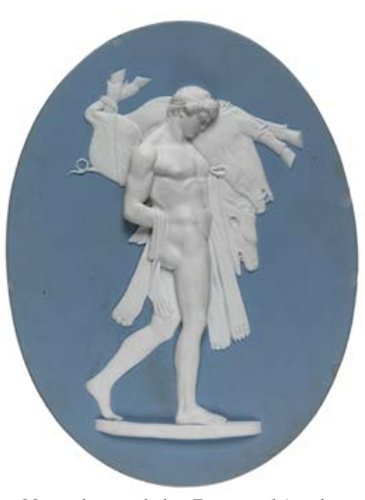A current exhibition at the Fitzwilliam Museum in Cambridge seeks to explore the ways in which classical and contemporary images of the Greek hero Hercules have defined western art.
The Nemean Lion, the Erymanthean Boar, the Augean Stables, and the Apples of Hesperides are only a few of the 12 “heroic labors” mythically endured by Hercules. Images of Hercules, half man and half god, abounded in ancient Greece, his immaculate form and character providing an ideal model for Hellenic ideologies of perfection. On view now at the famed Fitzwilliam Museum on the campus of Cambridge University, “Following Hercules: The Story of Classical Art” aims to do just that: tell the story of classical art and “how Greece and Rome’s gods and heroes came to inhabit post-antique painting and sculpture.”

“Hercules and the Erymanthian Boar,” ca. 1790, jasperware plaque, 212 mm. (c) Fitzwilliam Museum 2015
The museum continues, “Hercules is brought to life by each of the 40 objects on display, from exquisite gems and coins, Renaissance drawings and bronzes, to 18th-century paintings, and Matthew Darbyshire’s giant polystyrene statue. Their interaction reveals how classical art was born, and gives classical art ongoing relevance.”

Matthew Darbyshire, “Hercules (detail),” 2014, polystyrene, 315 cm. (c) Robert Tucker and Jonathan Wilmot,
Restoration House 2015
“Following Hercules: The Story of Classical Art” opened on September 25 and will run through December 6.
To learn more, visit the Fitzwilliam Museum.
This article was featured in Fine Art Today, a weekly e-newsletter from Fine Art Connoisseur magazine. To start receiving Fine Art Today for free, click here.







